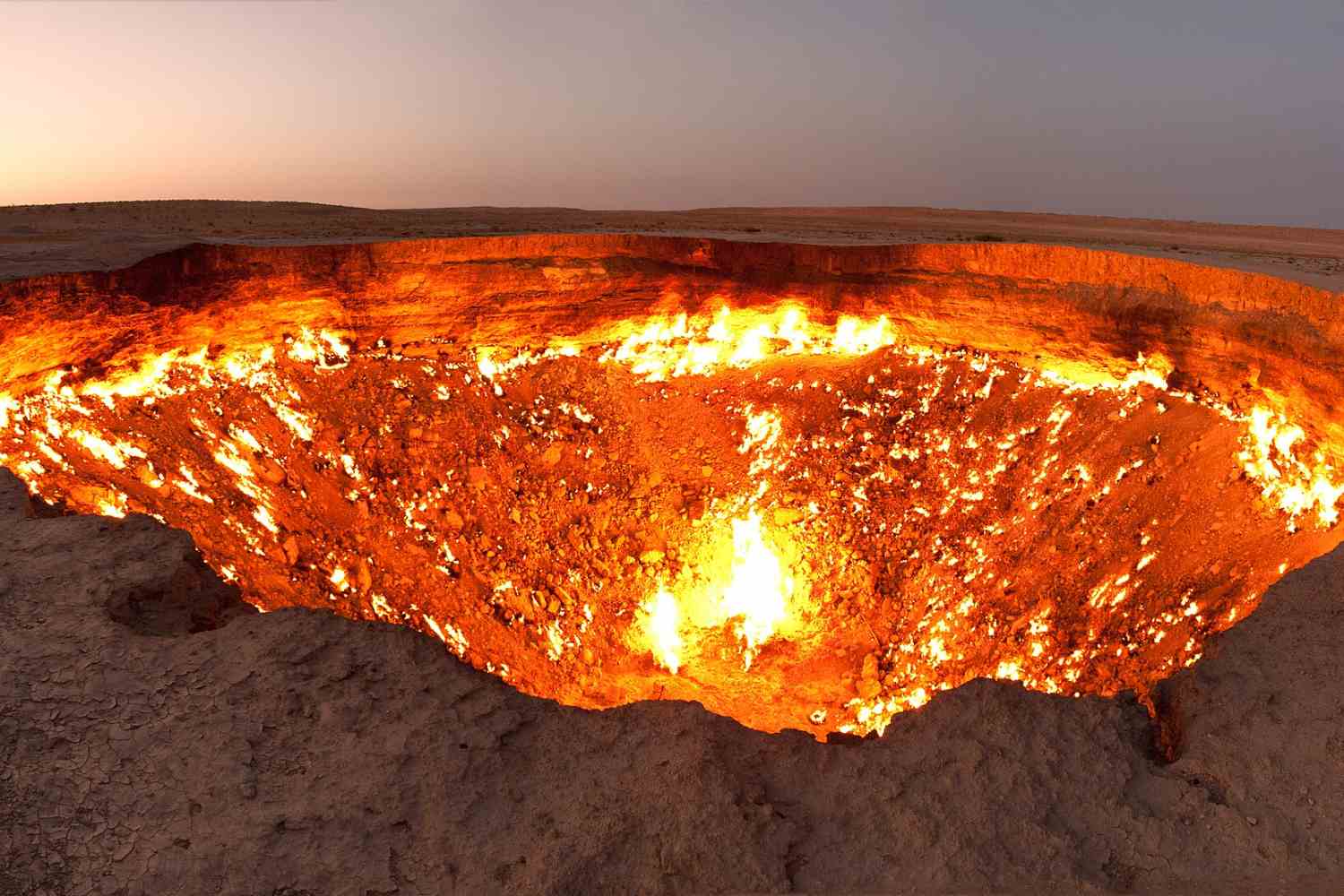Turkmenistan’s infamous “Door to Hell” is finally losing its fire after 50+ years. A symbolic and environmental shift—or just political smoke?

@Tormod Sandtorv/Pexels
In the middle of nowhere, it has burned like a beacon of human error for over half a century. Now, the fire is flickering—and the symbolism is impossible to ignore.
Deep in the Karakum Desert, in one of the most closed-off countries in the world, a massive pit has been on fire since 1971. Known locally as the “Door to Hell”, the Darvaza Gas Crater has become an otherworldly landmark—both a tourist magnet and a haunting reminder of mankind’s uneasy relationship with fossil fuels. But now, for the first time in over fifty years, that fire may finally be dying down.
How the fire started—and why it never stopped
It all began with a drilling accident. In 1971, a group of Soviet geologists was searching for gas reserves when they stumbled upon an underground cavern packed with methane. The ground collapsed, creating a crater roughly 230 feet wide (70 meters). Fearing the release of toxic gas into the atmosphere, the team made a decision: burn it off. They assumed the flames would last just a few days.
They were wrong.
For over five decades, the crater has been burning continuously, feeding off the steady stream of methane seeping from the earth’s crust. The result has been a surreal spectacle: a glowing wound in the desert, spewing flames and heat 24 hours a day, visible for miles in the dead of night.
A fading inferno
But the flames are shrinking. According to Irina Luryeva, director of the state-owned energy company Turkmengaz, the intensity of the burning has now been cut to about one-third of what it once was. “Now, the glow is barely visible,” she explained. “Where it once lit up the horizon, it now flickers faintly in the dark.”
Authorities have begun drilling new wells around the crater to capture methane before it escapes, hoping to reduce emissions and control the fire. This effort comes amid growing international pressure: Turkmenistan is one of the world’s largest emitters of methane, a greenhouse gas far more potent than carbon dioxide in the short term. Yet the country has repeatedly denied emissions data provided by organizations such as the International Energy Agency.
Fire as symbol, and the politics of climate
While the technical side of the intervention may seem straightforward, the broader implications are harder to ignore. Shutting down—or even dimming—the Door to Hell signals a potential shift in Turkmenistan’s stance on environmental responsibility. After decades of ignoring climate concerns, the government now appears to be signaling a willingness to engage, at least on paper, with global environmental standards.
Of course, this isn’t the first time Turkmen authorities have announced plans to extinguish the flames. Over the years, similar intentions have surfaced, only to quietly fade away. So, is this a genuine step toward sustainability, or just a temporary PR move designed to appease foreign critics? The answer is still up in the air.
A tourist magnet in a hermit nation
Ironically, the Door to Hell has also been one of Turkmenistan’s few international attractions. Thousands of curious travelers have braved the isolation of this authoritarian state to witness the crater’s haunting beauty up close. Watching flames dance in the night, hearing the hiss of gas, and feeling the dry desert wind—it’s an experience that’s hard to forget.
But if the flames vanish entirely, so too might one of the country’s only iconic landmarks. That loss, symbolic as it may be, is part of the climate equation too: what happens when we finally start shutting down the relics of fossil-fueled grandeur?
For now, the crater still burns—if only barely. And maybe that’s fitting. After all, few things die faster than symbols whose time has passed.
Source: Government of Turkmenistan
